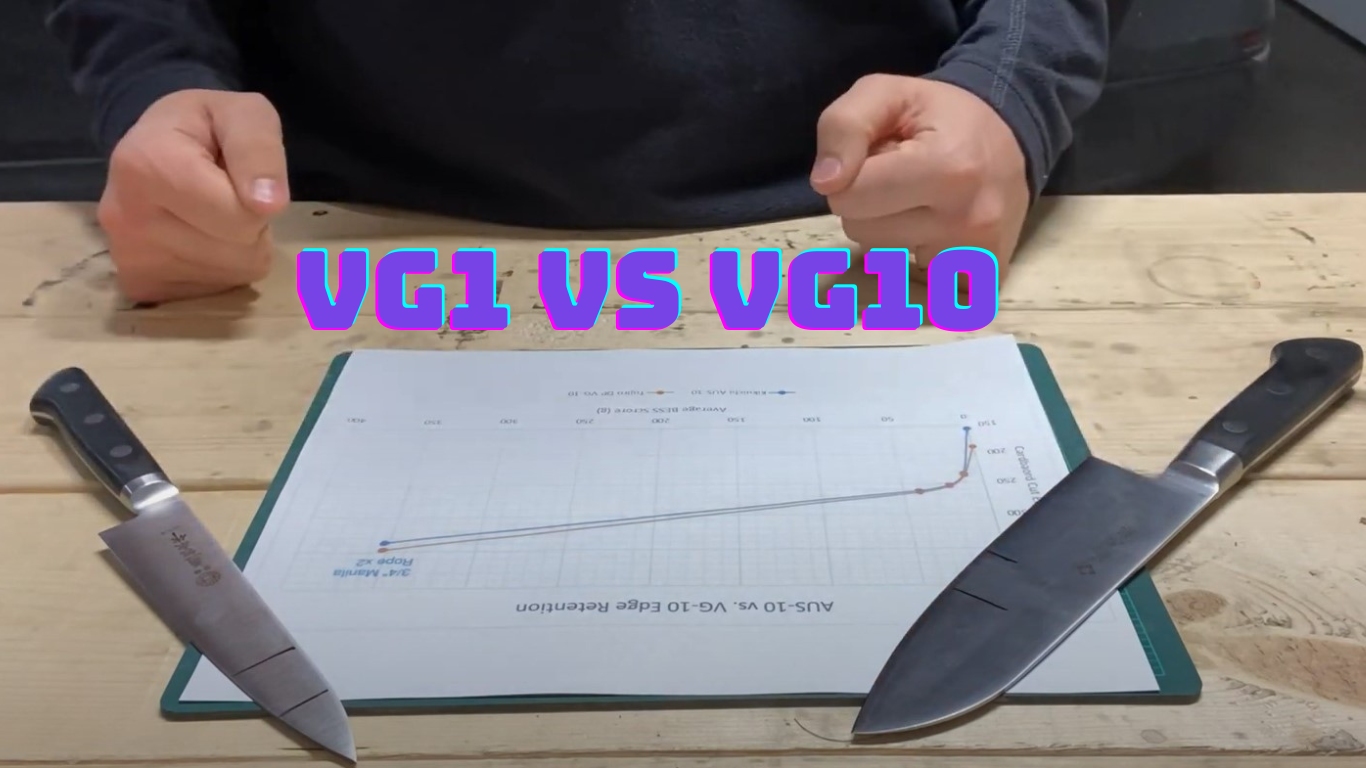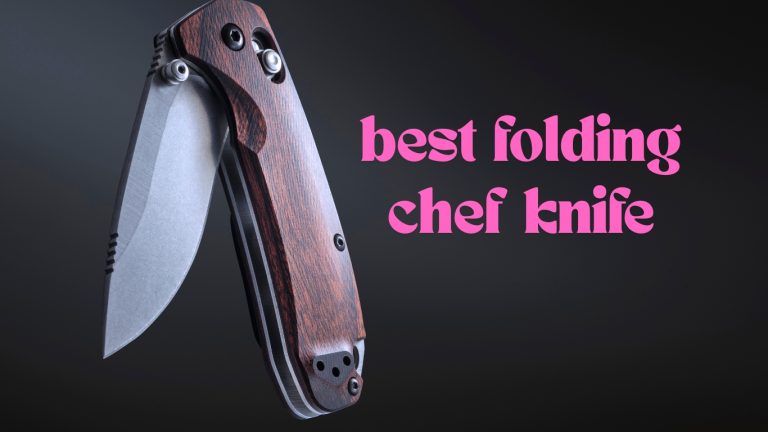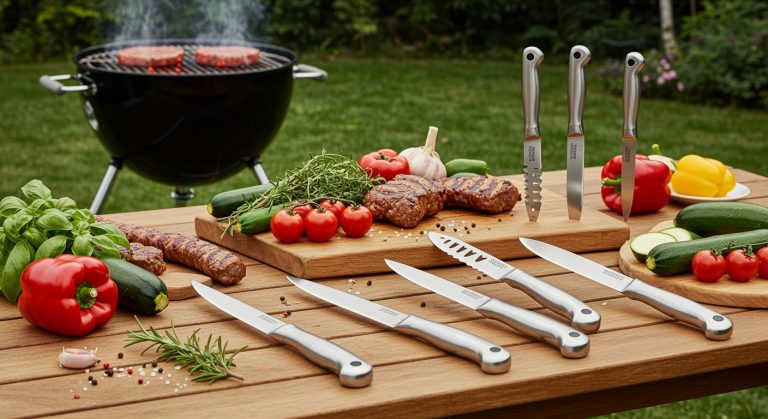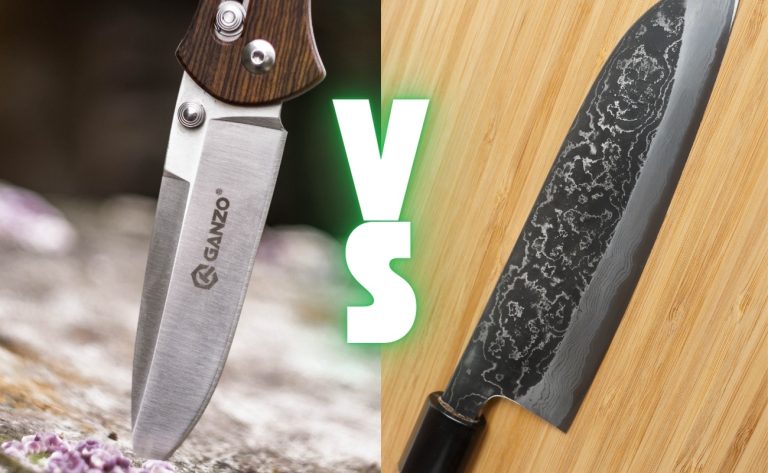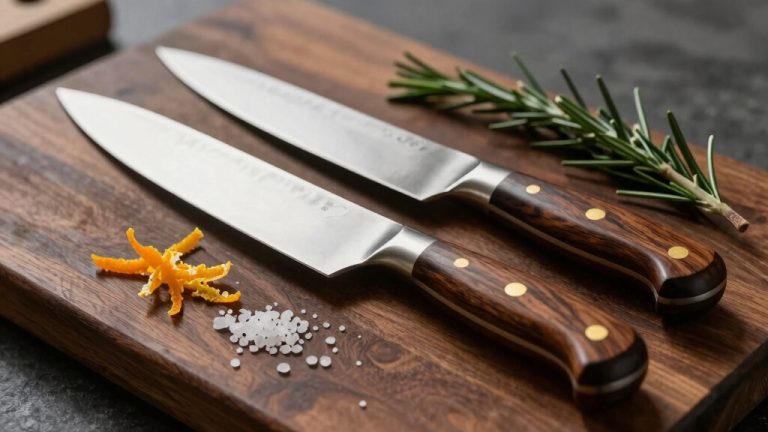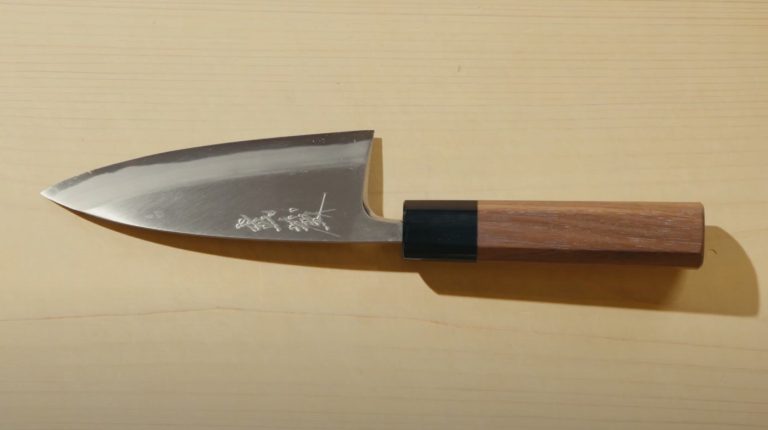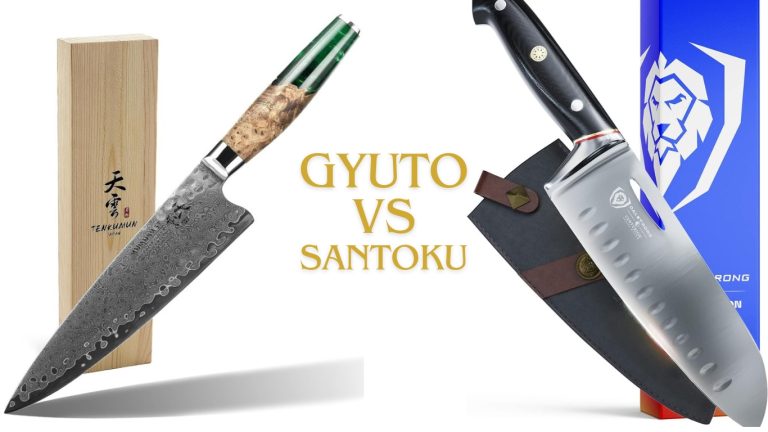VG1 vs VG10: Find the Best Steel for Your Kitchen Knife
When choosing between VG1 and VG10 for your knife, you’ll notice VG10’s superior hardness at HRC 60-62 outshines VG1’s 58-61, ensuring better edge retention and cutting precision.
You’ll find VG10’s composition, with vanadium and cobalt, enhances wear resistance, while VG1 offers easier sharpening due to lower hardness. Both resist corrosion, but VG10 excels slightly.
For durability, VG1’s toughness stands out. Curious about deeper insights? Stick around to uncover more detailed comparisons.
Key Takeaways
- VG10 offers higher hardness (HRC 60-62) compared to VG1 (HRC 58-61), enhancing cutting performance.
- VG10 has better edge retention than VG1 due to its superior composition.
- VG1 is easier to sharpen than VG10, which has a finer grain structure.
- VG10 provides greater corrosion resistance over VG1 with higher chromium content.
- VG1 is more affordable, while VG10 commands a premium for superior performance.
VG1 and VG10 Steels Overview
Precision matters when comparing VG1 and VG10 steels, both crafted by Takefu Special Steel Co., Ltd. in Japan.
As you evaluate these high-carbon stainless steels, note that VG1, the foundation of the VG series, offers solid hardness at HRC 58-61+ and excels in durability and wear resistance. It’s a reliable choice for kitchen knives and scissors.
Meanwhile, VG10, often dubbed “V Gold 10,” stands as an upgrade with higher hardness at HRC 60-62. You’ll find it delivers exceptional sharpness and edge retention, making it a favorite for premium Japanese chef’s knives and tactical blades.
Both resist corrosion well, but VG10 often outshines VG1 in performance balance. Their chemical compositions, particularly VG1’s high carbon content of 0.95-1.05%, contribute significantly to its edge retention capabilities. Analyze their distinct strengths to match your specific cutting needs effectively.
Chemical Composition Breakdown
As you analyze the chemical makeup of VG1 and VG10 steels, start by noting their carbon content, which hovers around 1.0% for both, providing comparable hardness potential.
Next, compare their chromium levels, where VG10’s slightly higher concentration, around 15%, offers a marginal edge in corrosion resistance over VG1’s 13-15% range.
Finally, consider the additional alloying elements, as VG10 includes vanadium and cobalt for enhanced wear resistance and strength, while VG1 lacks these critical components.
Additionally, VG1’s composition includes molybdenum and nickel, which contribute to its admirable toughness and ease of sharpening compared to VG10.
Carbon Content Analysis
When diving into the carbon content analysis of VG-1 and VG-10, you’ll notice both steels, crafted by Takefu Special Steel Co., Ltd. in Japan, share a strikingly similar carbon range of 0.95–1.05%, often cited at an average of 1.00%.
This high carbon level drives exceptional hardness and tensile strength in both alloys, ensuring solid edge retention and wear resistance through carbide formation.
As you analyze further, you’ll see carbon’s pivotal role in defining their performance. For VG-1, it underpins core strength as a predecessor steel.
For VG-10, it pairs with a complex alloy blend to elevate its status as a high-end material. Additionally, VG-10’s high carbon content contributes significantly to its excellent edge retention, making it a preferred choice for premium knives.
Chromium Level Comparison
Let’s shift focus from carbon content to the chromium levels in VG-1 and VG-10, a key factor in their stainless steel properties.
You’ll notice VG-10 typically holds around 15.0% chromium, sometimes ranging from 14.0-15.0%, while VG-1 varies between 13.0-15.0%, often cited at 14.0%.
Both exceed the 10.5-12% threshold for stainless classification, ensuring a protective chromium oxide layer against rust.
Analyze the impact: VG-10’s slightly higher, more consistent chromium content may give it a marginal edge in corrosion resistance.
However, don’t underestimate VG-1; its 13-15% still offers robust protection and strength.
Both steels form hard chromium carbides, boosting wear resistance.
Additionally, the higher chromium in VG-10 contributes to its reputation for maintaining sharpness over extended use maintaining sharpness.
Additional Alloying Elements
Beyond chromium, you’ll find that VG-1 and VG-10 differ markedly in their additional alloying elements, which critically shape their performance as blade steels.
VG-10 boasts higher molybdenum (0.9-1.2%) compared to VG-1’s 0.2-0.4%, enhancing wear resistance, corrosion resistance, and hardness through carbide formation.
You’ll also notice VG-10 includes vanadium (0.1-0.3%) for finer grain structure and toughness, while VG-1 has none.
Cobalt in VG-10 (1.3-1.5%) boosts strength and durability, absent in VG-1.
Meanwhile, VG-1 contains trace nickel (<0.25%) for slight toughness, unlike VG-10, which has none.
VG-10 further incorporates manganese (~0.5%) and silicon (~0.3-0.7%) for hardenability and deoxidization, elements less emphasized in VG-1’s simpler composition.
These differences directly impact their suitability for high-performance blades.
Additionally, VG-10’s higher carbon content (0.95-1.05%) compared to many steels allows for superior edge retention (superior edge retention).
Hardness and Edge Performance
As you analyze the hardness of VG1 and VG10, you’ll notice that VG10 typically ranges from 58-62 HRC, slightly surpassing VG1’s 58-61 HRC, though both are impressively hard for stainless steels.
When you assess edge retention, VG10 often outperforms due to its higher hardness and alloy content like Molybdenum and Cobalt, while VG1 still holds strong with excellent results in many tests.
Let’s break down how these factors impact their performance in real-world cutting tasks. Additionally, the inclusion of cobalt in VG10 allows for quenching at higher temperatures, enhancing hardness further.
Hardness Level Comparison
When comparing the hardness levels of VG1 and VG10, you’ll notice distinct differences that directly influence their performance in knife-making.
VG1 typically ranges from 58-61 HRC, while VG10 sits at 60-62 HRC, making it generally harder. This variance, though dependent on heat treatment, affects edge performance considerably.
You’ll find VG10’s higher hardness allows for finer, more acute edge angles, enhancing precise cutting capability. VG1, with slightly lower hardness, still achieves sharp edges but may be marginally easier to sharpen. Both steels are often heat treated to achieve these optimal hardness levels heat treated optimally.
However, VG10’s hardness can make sharpening more time-consuming, despite some reports of ease. Both steels surpass softer Western steels (HRC 55-58) in sharpness potential.
Additionally, VG10 might be more prone to brittleness, while VG1 offers commendable toughness.
Edge Retention Analysis
Diving into edge retention, you’ll notice that VG10 often outperforms VG1 due to its superior composition, including Vanadium and Cobalt, which enhance wear resistance and grain structure.
VG10’s finer grain and Vanadium carbides give it a sharper, more stable edge, rated around 7/10 for retention, surpassing VG1 in abrasive tasks.
Now, compare this to VG1, which offers good edge holding with high carbon and chromium but lacks those key alloys.
While some tests show minimal difference at matched hardness (59 HRC), VG10 generally maintains its profile longer.
You’ll find VG1 might deform under stress, though it’s tougher and easier to sharpen.
Heat treatment, blade geometry, and cutting material also critically influence how long each steel’s edge lasts.
Additionally, VG10’s high corrosion resistance, thanks to its chromium content, ensures the edge remains intact even in harsh conditions high corrosion resistance.
Toughness and Durability Comparison
While comparing VG-1 and VG-10, you’ll notice distinct differences in their toughness and durability profiles that impact their performance in demanding applications.
You’ll find VG-1 excels in toughness, thanks to Nickel content enhancing its resilience, making it ideal for durable kitchen knives.
VG-10, with higher hardness (HRC 60-62), balances toughness using Vanadium for grain refinement and Cobalt for strength, though it’s slightly less tough than VG-1 at similar hardness levels.
Additionally, VG-1’s composition, with low levels of phosphorus and sulfur, further contributes to its exceptional toughness.
Consider these key points for your analysis:
- VG-1’s Toughness: Its fine-grain structure resists impact well.
- VG-10’s Balance: Laminated versions boost toughness greatly.
- Durability Factors: High Chromium in both guarantees corrosion resistance, extending longevity.
Wear Resistance Analysis
Take a close look at the wear resistance of VG-1 and VG-10, and you’ll see clear distinctions driven by their compositions and hardness levels.
VG-10, with its higher carbon content (~1.0%) and hardness (HRC 60-62), outperforms VG-1 (HRC 58-61). You’ll notice VG-10’s enhanced carbide formation from higher Molybdenum (~1.0%) and Vanadium (~0.2%) content, boosting abrasion resistance. Cobalt (~1.5%) further strengthens its matrix, unlike VG-1, which lacks these elements.
Dive deeper, and you’ll find VG-1’s wear resistance, while good with Chromium (~13-15%) and Molybdenum (~0.3%), doesn’t match VG-10’s edge retention potential. This difference highlights why VG-10 is often preferred for high-end knives preferred for high-end.
VG-10’s fine grain structure guarantees a stable edge, making it superior for cutting tasks. Both are solid, but VG-10 clearly takes the lead in wear resistance.
Corrosion Resistance Insights
As you examine the corrosion resistance of VG-1 and VG-10, you’ll notice both steels are classified as stainless due to their high Chromium content, ranging from 13-15% in VG-1 and approximately 15% in VG-10.
VG-10’s slightly higher Chromium and considerably greater Molybdenum (~1% vs. 0.2-0.4%) enhance its resistance, especially to pitting corrosion. VG-1, while durable, may show small white pits under neglect, whereas VG-10’s Vanadium aids its oxide layer.
Additionally, VG-1 forms hard double carbide bonds during forging, which can influence its overall durability and resistance to wear.
Consider these key differences:
- Chromium Impact: Both exceed 13% Cr, forming a protective layer, but VG-10 edges out slightly.
- Molybdenum Boost: VG-10’s higher Mo content resists pitting better.
- Environment Suitability: VG-10 excels in humid or acidic conditions.
Sharpening and Maintenance Challenges
Shifting focus from corrosion resistance, let’s examine the sharpening and maintenance challenges of VG-1 and VG-10.
You’ll find VG-1, with its lower hardness (58-59 HRC), often easier to sharpen than VG-10 (60-62 HRC), though some report inconsistent results based on heat treatment.
VG-10’s fine grain structure, enhanced by Vanadium, lets you achieve a keener edge, but burr removal can be trickier, demanding precise technique and proper whetstones.
VG-10’s Vanadium-enhanced fine grain structure offers a razor-sharp edge, yet burr removal requires skillful technique and the right whetstones for perfection.
For maintenance, VG-10’s higher hardness guarantees better edge retention, reducing sharpening frequency, but it’s more prone to chipping if mishandled.
VG-1, potentially tougher, may need more frequent touch-ups due to lesser edge retention.
Both benefit from corrosion resistance, simplifying care, but you’ll need appropriate tools and consistent honing for peak performance. Regular honing practices can significantly extend the time between full sharpenings for both steels regular honing practices.
Personal experiences highlight that sharpening VG-1 can pose unique challenges compared to other stainless steels, often requiring traditional methods for best results unique sharpening challenges.
Cost and Practical Applications
While exploring the nuances of VG-1 and VG-10, you’ll notice distinct differences in cost and practical applications that influence their suitability for various uses.
You’ll find VG-1 more affordable, often priced closer to AUS8, making it a solid choice for budget-conscious buyers or beginners in the Japanese knife market.
VG-10, however, commands a premium, with prices ranging from $70 to over $100, reflecting its superior sharpness and edge retention for high-end kitchen or EDC knives.
Additionally, VG-10 is often favored for its high chromium content, which makes it less prone to rusting compared to other steels, enhancing its appeal for kitchen environments.
Consider these key points when choosing:
- Budget Needs: Opt for VG-1 if you’re after value and toughness for rough use.
- Performance Priority: Choose VG-10 for premium edge retention in chef’s knives.
- Application Fit: Match VG-1 to entry-level or VG-10 to tactical needs.
Frequently Asked Questions
Which Steel Is Better for Beginners?
When choosing a steel for beginners, you’ve gotta weigh key factors like ease of use and cost.
Opt for a material that’s forgiving yet performs well. Look for something easy to sharpen and tough against minor mishaps.
You’ll want decent edge retention without breaking the bank. Prioritize a balance of durability and maintenance simplicity to build your skills confidently, ensuring your early experiences with knives are positive and manageable.
How Do They Perform in Extreme Climates?
When tackling extreme climates, you’ll need to assess steel performance carefully.
In frigid conditions, watch for increased brittleness in high-hardness alloys, as cold can compromise edge integrity.
In scorching heat, prioritize materials with enhanced tempering resistance to maintain strength.
Humidity demands superior corrosion resistance to prevent rust.
You must evaluate chromium and molybdenum content for durability, ensuring your blade withstands temperature swings and moisture without losing toughness or sharpness.
Are There Specific Brands Preferring VG1?
Hey, you’re curious about specific brands that prefer VG1 steel, right?
Explore Cold Steel’s lineup; they favor VG1, especially in San Mai® III laminated fixed blades like the Trail Master.
For kitchen knives, check out Masutani, Tsunehisa, and Sakai Ichimonji Mitsuhide with their G-LINE series—they opt for VG1 for its durability and value.
Harukaze also joins the list, crafting reliable VG1 kitchen tools you can trust.
Can VG10 Be Used for Outdoor Tools?
Hey, did you know VG10 steel boasts a chromium content of 14.5-15.5%, ensuring top-tier corrosion resistance?
You can definitely use VG10 for outdoor tools. Its hardness of 58-61 HRC offers a precise balance of wear resistance and toughness, ideal for camping or fishing tasks.
You’ll appreciate its edge retention during extended field use and easy sharpening.
However, avoid heavy-duty chopping—VG10’s not built for extreme impact. Stick to cutting!
How Do They Compare in Aesthetics?
Hey, when you’re evaluating the aesthetics of blade steels, focus on finish and visual appeal.
You’ll notice high-end knives often boast premium looks with bright, corrosion-resistant surfaces. Check for polished, mirror-like shines that catch the eye.
Look at Damascus patterns—wavy, layered designs can stun. See how etching reveals intricate grains or dark finishes.
Assess polish retention and surface treatments like Kurouchi.
You’re analyzing more than function; it’s about striking visual impact.
Two Titans of Steel—One Final Choice
As you weigh VG1 against VG10, picture VG10 as a sharp, unyielding blade slicing through challenges with superior hardness and wear resistance, while VG1 stands as a sturdy shield, offering greater toughness.
You’re choosing between precision and resilience. VG10 demands more care in sharpening, yet excels in edge retention.
For corrosion resistance, both hold strong. Pick your steel based on your mission—will you wield the blade or bear the shield?

